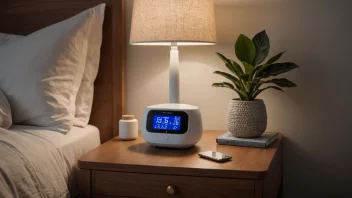As smart home technology continues to gain traction, many homeowners are looking for ways to enhance their living spaces with automated solutions. One of the simplest yet most effective ways to start automating your home is by using smart switches. In this article, we will compare two popular options: the Lutron Caseta and the TP-Link Kasa. Both products offer unique features, advantages, and drawbacks that can help you decide which smart switch is right for your needs.
Overview of Smart Switches
Smart switches allow you to control your home lighting and appliances remotely, providing convenience and energy savings. They can be integrated with various smart home systems and can often be controlled via smartphone apps or voice commands. However, choosing the right smart switch involves considering factors such as compatibility, ease of use, and additional features.
Lutron Caseta Smart Switch
The Lutron Caseta is a well-established player in the smart switch market, known for its reliability and extensive compatibility with various smart home ecosystems.
Pros
- Compatibility: Works with a wide range of smart home systems, including Apple HomeKit, Amazon Alexa, and Google Assistant.
- Ease of Installation: Simple installation process that can be completed in less than 30 minutes.
- Smart Hub: Comes with a smart hub, which allows for local control and reduces dependency on cloud services.
- Geofencing Features: Offers geofencing capabilities to automatically adjust lighting based on your location.
Cons
- Price: Generally more expensive compared to other smart switches.
- Hub Requirement: Requires a hub for full functionality, which may add to the overall cost.
TP-Link Kasa Smart Switch
TP-Link Kasa is another strong contender in the smart switch arena, appealing to users looking for affordable and straightforward solutions.
Pros
- Affordability: Typically cheaper than Lutron Caseta, making it a budget-friendly option.
- No Hub Required: Functions without the need for an additional hub, simplifying the setup process.
- App Integration: User-friendly mobile app that allows for easy control and scheduling of devices.
- Voice Control: Compatible with Amazon Alexa and Google Assistant for voice commands.
Cons
- Limited Compatibility: Does not integrate with Apple HomeKit, which may be a drawback for Apple users.
- Cloud Dependency: Relies on cloud services for remote access, which may lead to latency issues.
Installation and Setup
When considering smart switches, installation and setup ease is crucial. Both Lutron Caseta and TP-Link Kasa offer relatively straightforward installation processes, but there are differences worth noting.
Lutron Caseta requires a neutral wire for installation, which may not be available in all homes. If you do not have a neutral wire, you will need to either find a workaround or seek professional installation. On the other hand, TP-Link Kasa can work without a neutral wire, making it a more flexible option for older homes.
Features and Functionality
Both smart switches come with excellent features, but they differ in functionality.
Lutron Caseta’s standout feature is its smart hub, which allows for local control and enhances performance. The geofencing feature is also a significant advantage, automatically adjusting your lights based on your proximity to home. Additionally, with the Lutron app, users can create custom lighting scenes, set schedules, and control multiple switches simultaneously.
TP-Link Kasa, while lacking a hub, compensates with a robust app that allows for scheduling, timers, and remote access. However, its lack of geofencing may make it less appealing for those who want hands-free automation based on location.
Performance
When it comes to performance, both switches function effectively, but user experiences may vary.
Lutron Caseta is renowned for its reliability and quick response times, thanks to its local control capabilities. Users have reported minimal latency and seamless integration with other smart home devices.
TP-Link Kasa also performs well, but some users have noted occasional delays when accessing the switch remotely due to its dependence on cloud services. However, for local control via Wi-Fi, it remains fast and efficient.
Final Thoughts
Choosing between Lutron Caseta and TP-Link Kasa hinges on your specific needs and preferences. If you’re looking for a feature-rich switch with extensive compatibility and reliable performance, Lutron Caseta may be the better choice despite its higher price point and hub requirement. Conversely, if you want an affordable, straightforward solution without the need for a hub, TP-Link Kasa is an excellent option that offers solid functionality.
Ultimately, both products have their merits, and your decision should be guided by your existing smart home setup, budget, and desired features. With either option, you are well on your way to a more automated and efficient home.






